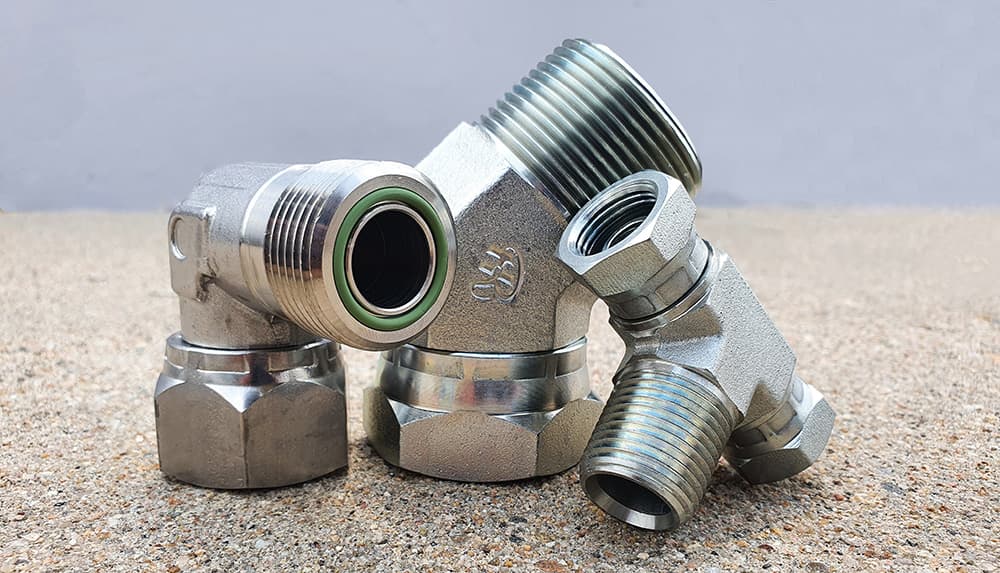What are Hydraulic Hose Swivels and When to Use Them?

Image Description: Hydraulic hose swivels
When designing and assembling components in a hydraulic system, technicians and engineers often face challenges when it comes to routing hydraulic hose assemblies. They have to visualize the system in operation to ascertain motions and vibrations that can put stress on hoses or cause abrasions. Failure to include these factors may result in hydraulic fluid leaking out, damage to the machine and its surrounding, and safety risks. Cases like these require swivel fittings.
What are Hydraulic Hose Swivels?
Swivel-type fittings are manufactured in a way that allows them to rotate about their axis. Using these fittings with hose assemblies prevents excessive twisting, kinking, and bending of the hose, prolonging its life and reducing downtimes for maintenance.
Most swivel fittings consist of two parts: a stem which is the stationary part that connects to the body of the existing hydraulic system, and housing that sits on top of the stem, secured by a locking nut. Other designs include internal sealing mechanisms and ball bearings for restricted or unrestricted motion.
Tight tolerances and manufacturing guidelines allow them to be used in high-pressure applications as well. Hence, they offer leak-proof performance while resisting sudden jerks and loads that come with a hydraulic system’s operation. Depending on the complexity of the fitting, the range of motion it offers, and the quality of parts, they do tend to wear out with time. However, modern designs come with simple repair solutions and replacement parts.
Why use Hydraulic Hose Swivels?
Hydraulic hose swivels find usage in many industrial applications by allowing a range of motion, leading to simpler hydraulic system designs, and permitting faster maintenance regimes. Here are some applications that require swivel fittings.Hydraulic Actuators
Hydraulic machinery is prevalent in many industries like the mining, aerospace, and automotive industries. They rely on hydraulic actuators to exert excessive forces and torque depending on their application. The movement of hydraulic actuators causes an extension or contraction in the hydraulic lines connected to their adjoining hydraulic cylinders. Hence, having fittings that can accommodate this range of motion becomes a necessity to prevent lines from twisting and weakening at the fittings.
Robotic Arms
Robotic arms are one of the most sophisticated and complex hydraulic systems commonly found in manufacturing installations. They need to perform repetitive tasks with high precision and control with a high degree of freedom of movement in multiple axes. Although motors can also be used in this application, hydraulic fluid offers more torque and control.
Their movement at high torque has the potential to strip away lines from their socket leading to devastating hydraulic system failure and costly repairs. Considering the degree of movement required, it leaves no option but to use swivel fittings in this application.
Mining Machinery

To compensate for surges, designers tend to lengthen the lines. However, this practice adds to the cost of an already expensive system. Using hydraulic hose swivels eliminates the need for this practice, making the system more compact and reducing the budget.